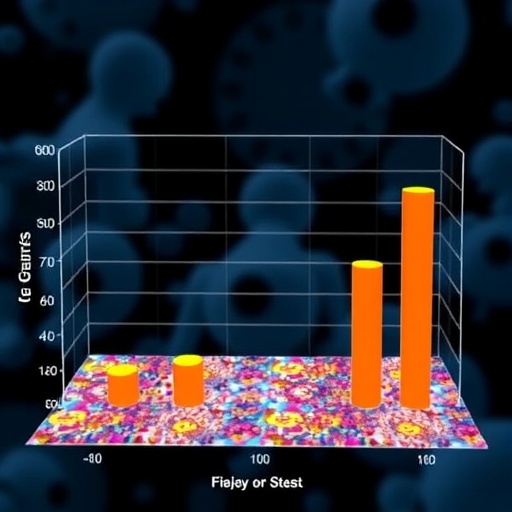Takotsubo syndrome, often referred to as broken heart syndrome, has emerged as a captivating yet complex condition in the realm of cardiology. This unique syndrome, which first gained recognition in Japan during the 1990s, is characterized by acute heart failure attributed to transient left ventricular dysfunction. Unlike traditional acute coronary syndrome, which is typically the result of obstructed coronary arteries, Takotsubo syndrome arises without any such occlusion. Remarkably, it affects a significant demographic—accounting for approximately 2-3% of all cases that present as coronary syndromes and strikingly more prevalent among women than men.
The hallmark of Takotsubo syndrome lies in its transient nature; patients often exhibit symptoms that mimic those of a heart attack yet show no definitive signs of coronary artery blockage. This phenomenon poses intriguing questions for medical professionals regarding the underlying mechanisms that trigger such dramatic cardiovascular events. It is essential to appreciate the interplay between emotional and physical stressors that can precipitate what appears to be stunning heart failure in an otherwise healthy individual. Understanding how these stressors lead to drastic changes in cardiac function could redefine medical approaches to this disorder.
Historically, the recognition of Takotsubo syndrome paved the way for an evolving understanding of cardiovascular responses to stress. Research continues to shed light on how intense emotional situations—such as severe grief or shock—can lead to acute cardiac dysfunction. The clinical features are often accompanied by corroborating evidence of wall motion abnormalities on echocardiograms, further complicating diagnosis and requiring nuanced interpretation from healthcare providers. Accurate diagnosis is critical, as many patients could otherwise be misclassified as having a myocardial infarction or other coronary artery diseases.
Despite advancements in the understanding of Takotsubo syndrome, definitive pathophysiological mechanisms remain strangely elusive. Current hypotheses largely orbit around the idea of catecholamine surges—elevated levels of stress hormones such as adrenaline and norepinephrine—which are thought to affect cardiac function profoundly. These chemicals, naturally produced in response to stress, can lead to myocardial stunning, resulting in the observable dysfunction noted in Takotsubo syndrome. Further research into how these hormones interact with the sympathetic nervous system is vital for developing more targeted interventions for affected patients.
In terms of clinical management, the absence of randomized controlled trials has starkly limited the development of standardized treatment protocols for Takotsubo syndrome. Current practices largely revolve around supportive care and monitoring, especially during the acute phase where the risk of complications can be markedly high. Patients often experience recovery within weeks, yet the lack of concrete evidence-based therapies poses a significant barrier for clinicians in managing this condition confidently. More robust data deriving from clinical trials and cohort studies would provide the foundation for structured treatment options moving forward.
The Mayo Clinic and the European Society of Cardiology have attempted to establish diagnostic criteria to aid clinicians in identifying Takotsubo syndrome consistently. These criteria help differentiate it from other cardiovascular conditions, allowing for better-targeted diagnostic approaches. Nevertheless, the ongoing challenge lies in confirming these diagnoses in practice. While many physicians are becoming increasingly familiar with the syndrome, its unique presentation continues to confound!
In addition to physical stressors, the impact of emotional stress cannot be overstated in the context of Takotsubo syndrome. The relationship between psychological health and cardiovascular disease is a hotbed of ongoing research. Emerging evidence suggests that high levels of stress and anxiety may be more than just risk factors; they could directly correlate with the physiological events leading to Takotsubo. Exploring these psychological dimensions may furnish healthcare providers with a more holistic understanding of the syndrome and its management.
Another dimension to consider is the influence of gender in the presentation and outcomes of Takotsubo syndrome. Women are predominantly affected by this condition, especially those in post-menopausal stages. The interplay of hormonal factors may also provide crucial insights into its pathophysiology. Understanding the nuances of gender differences in cardiovascular responses to stress can catalyze new research avenues, leading to gender-specific treatment protocols and preventive measures.
Despite the reputation of Takotsubo syndrome as a transient phenomenon, research suggests that it can, in some cases, have longer-lasting effects on heart health. Some patients may experience a phenomenon known as LV apical ballooning, where the left ventricle becomes temporarily enlarged and dysfunctional. While many fully regain their cardiac function, a subset of patients could potentially face long-term cardiovascular implications. This opens a realm of questions regarding the necessary follow-up and rehabilitation plans for affected individuals.
In closing, the complex interplay of emotional stress, physiological response, and individual health factors continues to shape our understanding of Takotsubo syndrome. As the medical community delves deeper into the available data, the call for evidence-based management protocols becomes increasingly important. With ongoing research and dialogue, there is hope that the mechanisms behind the syndrome will become clearer, leading to improved diagnostic and treatment strategies. The future of cardiology may very well depend upon unraveling the intricate relationships between our emotional experiences and physical health, especially as it relates to conditions as enigmatic as Takotsubo syndrome.
In conclusion, while much has been discussed regarding Takotsubo syndrome, the pathophysiological insights gathered from ongoing research will undoubtedly play a vital role in managing this captivating condition. As we expand our understanding, the synthesis of psychosocial and medical knowledge will likely lead to more effective prevention and treatment strategies in the years to come. This evolving dialogue is essential not only for clinicians but also for patients who may find themselves bewildered by a condition resulting from significant emotional or physical stress.
Subject of Research: Takotsubo syndrome and its pathophysiology.
Article Title: Takotsubo syndrome: pathophysiological insights and innovations in patient care.
Article References:
Omerovic, E., Redfors, B. Takotsubo syndrome: pathophysiological insights and innovations in patient care.
Nat Rev Cardiol (2025). https://doi.org/10.1038/s41569-025-01211-5
Image Credits: AI Generated
DOI: 10.1038/s41569-025-01211-5
Keywords: Takotsubo syndrome, heart failure, acute coronary syndrome, catecholamines, emotional stress, gender differences.
Tags: acute heart failureBroken Heart Syndromecardiovascular responses to stresscoping with emotional triggers in health.diagnosis of Takotsubo syndromeemotional stress and heart healthgender differences in heart diseaseinnovations in cardiologyTakotsubo syndrometransient left ventricular dysfunctiontreatment strategies for heart failureunderstanding heart attack symptoms





